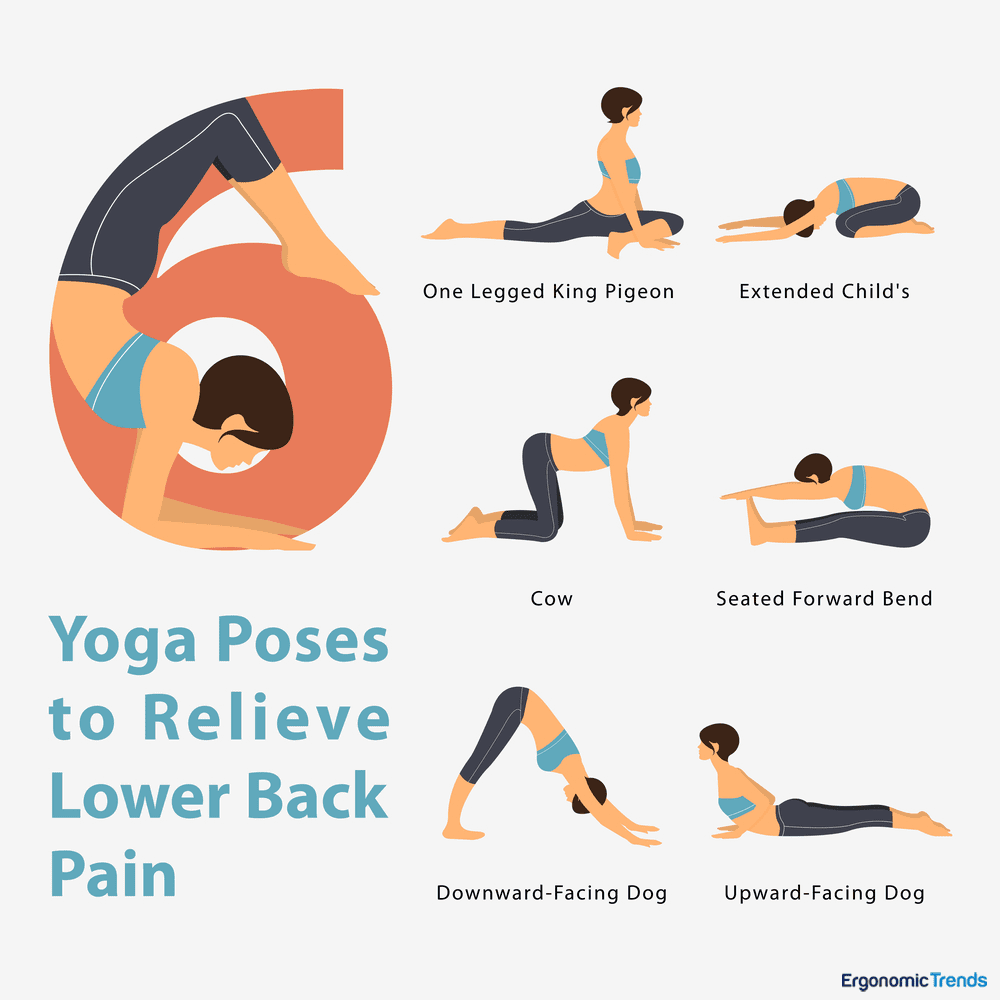 One of the most common ailments facing modern society Is back pain. Our sedentary lifestyle, increasingly long hours at work, and poor ergonomics all contribute to what the has become a 21st century epidemic.
One of the most common ailments facing modern society Is back pain. Our sedentary lifestyle, increasingly long hours at work, and poor ergonomics all contribute to what the has become a 21st century epidemic.
According to the American Chiropractic Association, low back pain is the single leading cause of disability worldwide. 80% of us will experience back pain at some point our lives.
It is the most common reason for missed worked, with lower back pain being the single leading cause of disability worldwide. Now that’s a mind boggling statistic.
If you suffer from back pain, or wish to avoid going down that agonizing road, there are things you can incorporate into your daily routine to really make a positive impact. Ensuring you have an ergonomic work space, maintaining a healthy weight, and having a proper exercise routine that strengthens the back all are essential.
6 Yoga Poses That Target the Back
Yoga is a set of physical and mental practices with a long list of proven benefits. The AOA lists among them improved strength, tone, and protection from injury. Specific yoga poses that target the lower back can help strengthen your back while at the same time alleviate tension and pain that comes with an injured back.
The following are 6 great yoga poses that can help ward off back pain. As with any medical condition, be sure to consult with your doctor first if you already suffer from back pain before performing any of the poses below.
One Legged King Pigeon
Start on all fours, with your hands ahead of your shoulders and knees below your hips. Bend one knee (usually the right first) as you extend the other leg backwards, until the thigh touches the floor.
Slide your hands towards the front shin and push them against the ground to lift your torso. Hold this position for a few breaths before switching legs.
Extended Child’s Pose
This is an excellent pose to stretch your spine and hips. Begin on all fours, then go into a kneeling position as you stretch your arms forward. Fingers should be relaxed, with your forehead resting on the ground.
Cat/Cow Pose
Once again, start on all fours. Inhale and drop your belly towards the ground as you arch your back. Lift your chest and chin so you’re looking up. Then, exhale and round your back in the opposite direction, towards the ceiling.
At this point your body should resemble a cat stretching its back. Alternate between these two postures for 10-15 times as in inhale and exhale.
Seated Forward Bend
Start in a seated position as you extend your legs. Bend your knees if needed. Inhale and reach your arms towards your feet. As you exhale, bend forward from the hip, extending your torso. Hold on to your feet, or shins for those of us that are less flexible. Repeat this a few times.
Downward Dog
Most people will no doubt recognize this pose, or at least are familiar with the term “downward dog”. Begin with your hands and knees on the floor, with your wrists under your shoulders and your feet hip width apart. Spread your fingers for a good grip.
As you breathe out, lift your knees up and off the floor, with your toes tucked. Strive to have your pelvis pointing towards the ceiling, forming an upside down V shape. Maintain this position for a few breathes before bending your knees to come back to your hands and knees again.
Upward Facing Dog
Lie flat on your stomach, legs extended and the tops of your feet touching the floor. With your elbows bent, press down with the palm of your hand to peel your chest away from the floor. Your legs may also lift up slightly at this point. Hold for 15 seconds before releasing your body back onto the floor.
Other Tips for Maintaining a Healthy Back
A preventative approach is always the best approach when it comes to your health. The following tips work in tangent with an exercise routine to help you maintain a strong and pain free back.
Maintain a Healthy Weight
Excess weight can compress the disc and nerves in your back, resulting in back pain. Rush University has a nifty BMI Calculator that calculates the ideal weight for a person based on his/her height.
For a person measuring 5′ 9″ in height for example, a weight of 128 to 168 lbs is considered normal, while 169 to 202 lbs ventures into the category of being overweight.
Use an ergonomic chair
With so much of our waking hours spent sitting down, having an ergonomic chair is critical to prevent the development of a stiff or painful back. Pick a chair that supports your body, with proper lumbar support for the back.
Alternate your Sitting Postures Throughout the Day
Excess of anything creates problems, and this is especially true when it comes to sitting. While at work, try to alternate between sitting and standing, either with an adjustable height desk, or just taking breaks and walking around periodically. This simple routine alone goes a long way in promoting a healthy body free of tension and pain.
Conclusion:
Back pain can start as a mild hindrance but quickly develop into a crippling disability. With the right set of exercise regime such as yoga, healthy lifestyle and good work space ergonomics, you can greatly reduce your chances of becoming sidelined by back pain.
John Muller at ergonomictrends.com
FB: https://facebook.com/ergonomictrends
Twitter: twitter.com/ergonomictrends
